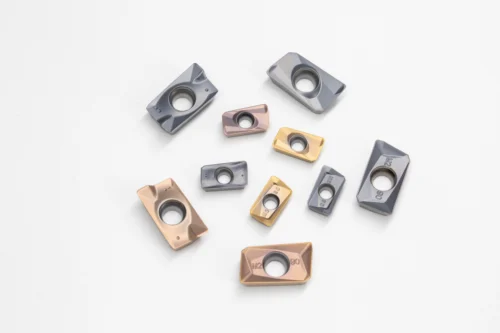Carbide Inserts: Types, Coatings & Production

①、Classification by geometric shape
| Type | Typical groove type | Features | Applicable scenarios |
| Positive angle inserts | Type C, Type D | Light cutting and smooth chip removal | Precision machining, thin-walled parts |
| Negative insert | T-type, R-type | High edge strength, multiple edges can be reused | Heavy-duty roughing, interrupted cutting |
| Profiling inserts | V-type, S-type | Complex contour forming | Mould cavity and surface processing |
| Cutting insert | Type G, Type F | Narrow insert design, precise cutting depth control | Grooving and cutting processes |
②、carbide inserts By coating technology
1. CVD coating (chemical vapor deposition)
Coating: TiCN/Al₂O₃/TiN multilayer composite
Advantages: high temperature resistance (>1000℃), anti-oxidation
Scenario: high-speed continuous cutting of steel parts
2. PVD coating (physical vapor deposition)
Coating: TiAlN, CrN, DLC, etc.
Advantages: smooth surface, low friction coefficient
Scenario: high-precision processing, sticky materials (aluminum alloy, titanium alloy)
Three major manufacturing bases for cemented carbide inserts:
1. Zhuzhou, China (Tungsten Resource Industrial Cluster)
2. Tubingen, Germany (Precision Coating Technology Center)
3. Ohio, USA (North American Rapid Response Hub)

Lizhou Cemented Carbide is rooted in the “World Tungsten Capital” industrial cluster, relying on localized tungsten ore resources and large-scale production advantages to increase the production capacity of cemented carbide blades in the world.
Synchronize with the emerging manufacturing market in Southeast Asia, and provide cost-effective tool solutions for automotive parts, general machinery and other fields.
